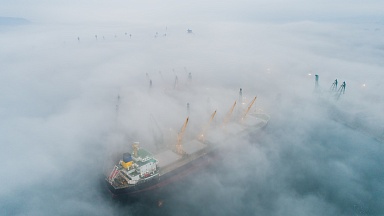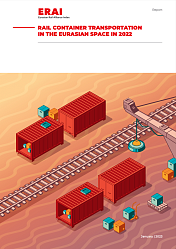Today, Friday 11 February, ERFA published its position paper in response to the European Commission’s proposal for a revision of the TEN-T Guidelines in December 2021. ERFA strongly supports the infrastructure parameters being proposed, however, provisions to ensure that rail freight can continue to function as best as possible are lacking, the industry association says.
Don’t lose the focus on freight In the revision proposed, the European Commission has suggested the integration of the Core Network Corridors (CNCs) and Rail Freight Corridors (RFCs) under a new name: the European Transport Corridors (ECTs). It was one of the most notable changes, meant to avoid isolation of the two networks and improve the cooperation between the governing bodies of RFCs and CNCs.
This has certain advantages and could lead to better and more clarification on infrastructure allocation, which should eventually lead to the securing of better freight paths, ERFA agrees. Nevertheless, the representative body is concerned that the previous specific freight focus of Rail Freight Corridors could be lost. It has to be guaranteed that in international corridor development the importance and anticipated higher volumes of rail freight is not lost or displaced by a more national focus on the passenger traffic.
High-speed rail challenges freight ERFA is concerned about the capacity for freight on the network, especially as there is a strong focus on high-speed rail under the proposed revision. «This cannot come at the cost of rail freight and capacities for rail freight on corridor lines must be preserved. Increased speed difference between high-speed passenger trains and freight trains leads to reduced overall capacity and brings some challenges when trying to make both traffic co-exist.»
An example of how these challenges can be solved the Swiss model of Netznutzungskonzept/Netznutzungspläne, ERFA says. «This concept, namely fair and predictable capacity allocation, should be set as an objective along all corridors. This should be a first step to network wide capacity management as foreseen in TTR, creating benefits for freight also outside of corridors.»
Punctuality Punctuality is another important part of the revision, but according to ERFA, there are still some points of concern. In short, the association argues that «delays must be calculated along the entirety of a train journey and not only on numerous national assessments within each of the Member States crossed during a single journey».
The Commission should establish an efficient monitoring system to follow the data on a European level. Furthermore, the primary cause of the delays should be properly assessed. European Transport Coordinators should be empowered to prioritise funding towards resolving infrastructure bottlenecks identified in the assessment and provide recommendations on capacity management, ERFA states in its position paper.
Construction works ERFA also points out that construction works, although needed, should be carried out in a more coordinated manner to avoid major disruptions. «The situation can already be extremely difficult due to uncoordinated work among several infrastructure managers, a lack of alternative capacities and a lack of communication with railway undertakings. This all leads towards major disruptions of traffic on an international scale», it says.
Infrastructure managers should be obliged to identify alternative lines when major works are planned on a specific part of the European Transport Corridors, it argues. «Moreover, where works will reduce capacity by 50 per cent or greater for a period longer than 48 hours, infrastructure managers should be obliged to carry out a consultation process with railway undertakings to define the works and agree on alternative capacity for the duration of the temporary capacity restrictions.»
ETCS deployment The opportunity must also not be missed to reflect on the current problems facing ERTMS and ETCS deployment, ERFA finally says. "The financial strain being placed on railway undertakings to deploy ETCS is significant and it is doubtful any operational gain will be experienced until 2030 at the very earliest.
«ETCS deployment, and subsequent financing, must also be included as a priority for infrastructure development. In the short term it is essential that Railway Undertakings are not confronted with specific national obligations which require additional software changes, which are costly and could further restrict the use of locomotives.
Essential years up till 2030 ERFA President Dirk Stahl commented: «Within ERFA, we have studied the Commission proposal in detail and believe, although there are many good provisions with the Regulation, further work is needed. The essential years for reaching the targets of the Green Deal and modal shift are those up until 2030. The implementation plans for infrastructure development and ERTMS therefore have to be reliable and must fit with the operational needs of rail freight business in the coming years.»
ERFA Secretary General Conor Feighan concluded: «The TEN-T Guidelines have a critical role to play in regards to infrastructure development. What must not be forgotten is that they also have a role to play to ensure these developments take place in a coordinated manner. It is essential for rail freight that we finally move away from national development plans to a coordinated and international approach whilst keeping in mind the capacity needs of the sector. This also includes the necessary development and implementation of a slot allocation system to secure rail freight paths.»





